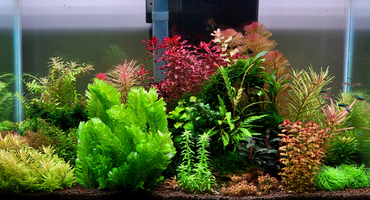MichaelJ
Member
Hello,
The premise of this thread is to explore the in's and out's of the practical application of lean dosing as devised by @Happi and others. The focus of this thread is to engage hobbyists who have a genuine interest in this approach - to learn about it, build upon it and possibly apply it to their own planted aquariums and share their practical experiences with the lean approach. This is NOT a pro and con discussion or a discussion that encourage comparisons with other fertilizer approaches - please defer posts with that connotation to the related thread here on UKAPS. Thank you in advance for your understanding!
NOTE: Lean dosing is by some hobbyists considered to be somewhat experimental and possibly comes with several prerequisites that may make it unsuitable for beginners or casual hobbyists. For those who are not interested in experimental approaches UKAPS offers information on plenty of well-tested mainstream fertilizer methods. Also keep in mind that your choice of fertilization method, while important, is only one piece of the vast puzzle that makes a planted aquarium successful!
Topics and questions that we need to address over time includes:
What do we mean by lean dosing overall... ?
What targets should we dose in terms of NPK and Micros?
What off-the-shelf products are suitable for lean dosing?
How do we DIY lean dosing?
What are the prerequisites in terms of water parameters?
Do we need to make changes to our lean approach depending on the water parameters ?
What are the considerations for our precious livestock?
What plants are particular suitable for lean dosing and which are not?
How lean dosing differs in a low-tech vs. a high-tech environment?
How might our maintenance regime change when we apply the lean dosing approach?
How do we go about migrating from another/existing dosing regime to lean to ensure we maximize the chance of success?
What corrective actions do we take if thing starts to go south - such as the appearance of algae, deficiency symptoms etc.
.... I am sure there are many other questions we need ask and understand!
All right, let the flow of relevant information commence! 🙂
The premise of this thread is to explore the in's and out's of the practical application of lean dosing as devised by @Happi and others. The focus of this thread is to engage hobbyists who have a genuine interest in this approach - to learn about it, build upon it and possibly apply it to their own planted aquariums and share their practical experiences with the lean approach. This is NOT a pro and con discussion or a discussion that encourage comparisons with other fertilizer approaches - please defer posts with that connotation to the related thread here on UKAPS. Thank you in advance for your understanding!
NOTE: Lean dosing is by some hobbyists considered to be somewhat experimental and possibly comes with several prerequisites that may make it unsuitable for beginners or casual hobbyists. For those who are not interested in experimental approaches UKAPS offers information on plenty of well-tested mainstream fertilizer methods. Also keep in mind that your choice of fertilization method, while important, is only one piece of the vast puzzle that makes a planted aquarium successful!
Topics and questions that we need to address over time includes:
What do we mean by lean dosing overall... ?
What targets should we dose in terms of NPK and Micros?
What off-the-shelf products are suitable for lean dosing?
How do we DIY lean dosing?
What are the prerequisites in terms of water parameters?
Do we need to make changes to our lean approach depending on the water parameters ?
What are the considerations for our precious livestock?
What plants are particular suitable for lean dosing and which are not?
How lean dosing differs in a low-tech vs. a high-tech environment?
How might our maintenance regime change when we apply the lean dosing approach?
How do we go about migrating from another/existing dosing regime to lean to ensure we maximize the chance of success?
What corrective actions do we take if thing starts to go south - such as the appearance of algae, deficiency symptoms etc.
.... I am sure there are many other questions we need ask and understand!
All right, let the flow of relevant information commence! 🙂




